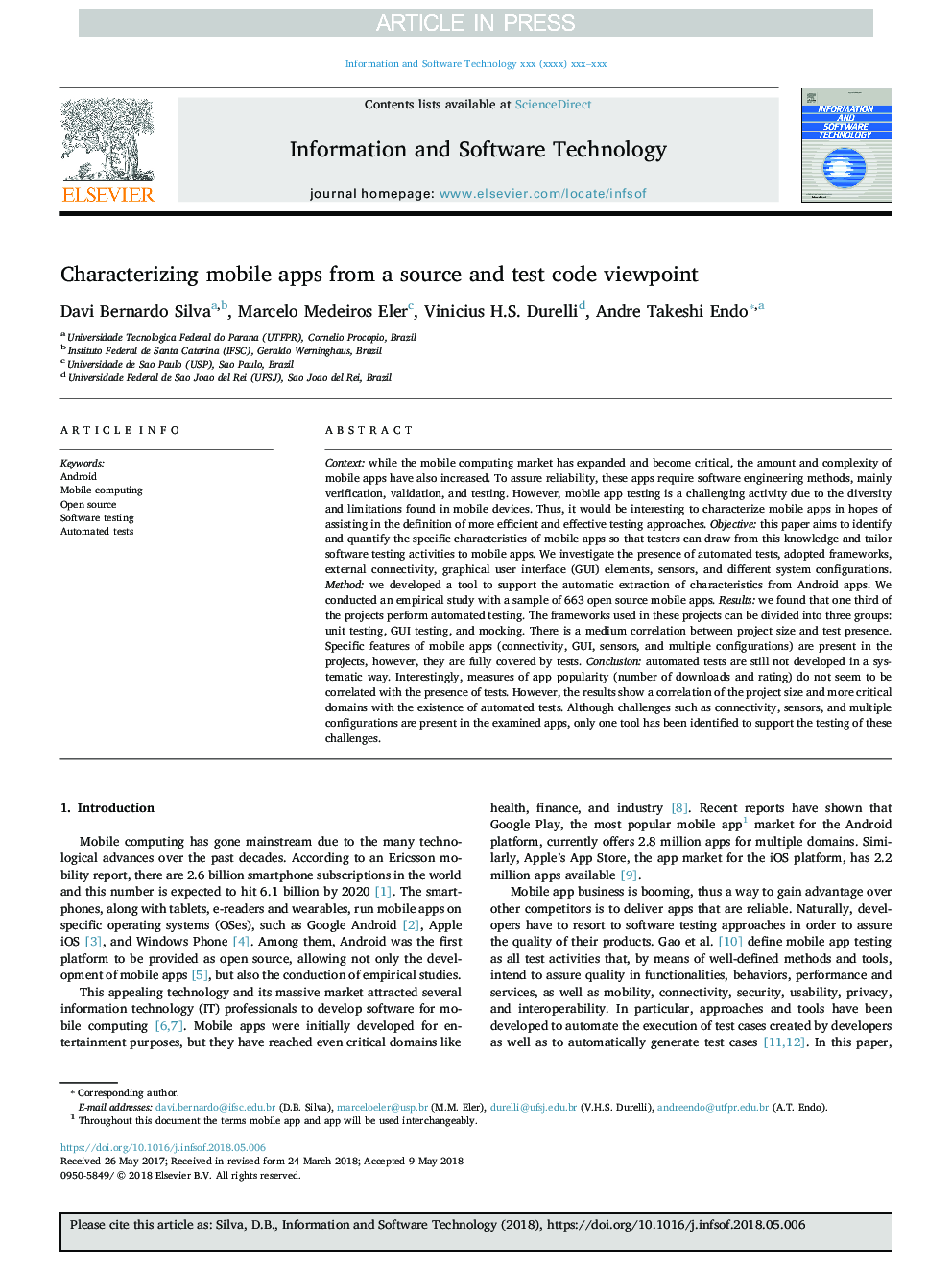| Article ID | Journal | Published Year | Pages | File Type |
|---|---|---|---|---|
| 6948009 | Information and Software Technology | 2018 | 19 Pages |
Abstract
Context: while the mobile computing market has expanded and become critical, the amount and complexity of mobile apps have also increased. To assure reliability, these apps require software engineering methods, mainly verification, validation, and testing. However, mobile app testing is a challenging activity due to the diversity and limitations found in mobile devices. Thus, it would be interesting to characterize mobile apps in hopes of assisting in the definition of more efficient and effective testing approaches. Objective: this paper aims to identify and quantify the specific characteristics of mobile apps so that testers can draw from this knowledge and tailor software testing activities to mobile apps. We investigate the presence of automated tests, adopted frameworks, external connectivity, graphical user interface (GUI) elements, sensors, and different system configurations. Method: we developed a tool to support the automatic extraction of characteristics from Android apps. We conducted an empirical study with a sample of 663 open source mobile apps. Results: we found that one third of the projects perform automated testing. The frameworks used in these projects can be divided into three groups: unit testing, GUI testing, and mocking. There is a medium correlation between project size and test presence. Specific features of mobile apps (connectivity, GUI, sensors, and multiple configurations) are present in the projects, however, they are fully covered by tests. Conclusion: automated tests are still not developed in a systematic way. Interestingly, measures of app popularity (number of downloads and rating) do not seem to be correlated with the presence of tests. However, the results show a correlation of the project size and more critical domains with the existence of automated tests. Although challenges such as connectivity, sensors, and multiple configurations are present in the examined apps, only one tool has been identified to support the testing of these challenges.
Related Topics
Physical Sciences and Engineering
Computer Science
Human-Computer Interaction
Authors
Davi Bernardo Silva, Marcelo Medeiros Eler, Vinicius H.S. Durelli, Andre Takeshi Endo,
